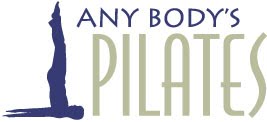Single Leg Kick follows Swan and precedes Double Leg Kick because they are a progression -- one builds on the other. The goal is to maintain hip to knee on the mat at all times, length through the whole spine with quiet upper body, while alternating kicking legs toward the glutes.
Many new clients press their navel to the mat, instead of lifting toward their spine. Instead of creating length in the spine and working the abdominals, this creates extension (arch) in the spine and recruits the muscles in the back (which can cause pain). Just like Swan, clients should lift their navel toward their spine (ceiling) and lengthen their spine to recruit the abdominals.
We instruct clients to kick, then lengthen the leg, but many only kick. Lengthening the leg provides length from the crown of the head through the foot, and helps provide stability when the opposite leg kicks. As in all Pilates exercises, all parts of the body should be engaged and working together during every exercise. If any body part is slack, the exercise will not work as well.
When clients complain of knee pain, it nearly always can be corrected by properly aligning the legs and feet. Knees should be hip socket width or closer together, feet in alignment with the knees. Ideally, legs and feet will be together. The heel should kick toward the glutes with the front of the leg to the knee on the mat, and the knee to the foot in line with the upper leg. Many clients start with the legs wider than hip socket width and when they bend the knees, they turn the knee -- causing the knees to turn in (knock-kneed) or turn out (like frog legs), pulling the leg out of alignment and that can cause pain.
See if you can see these principles at work in this example (thank you Sarah!):

